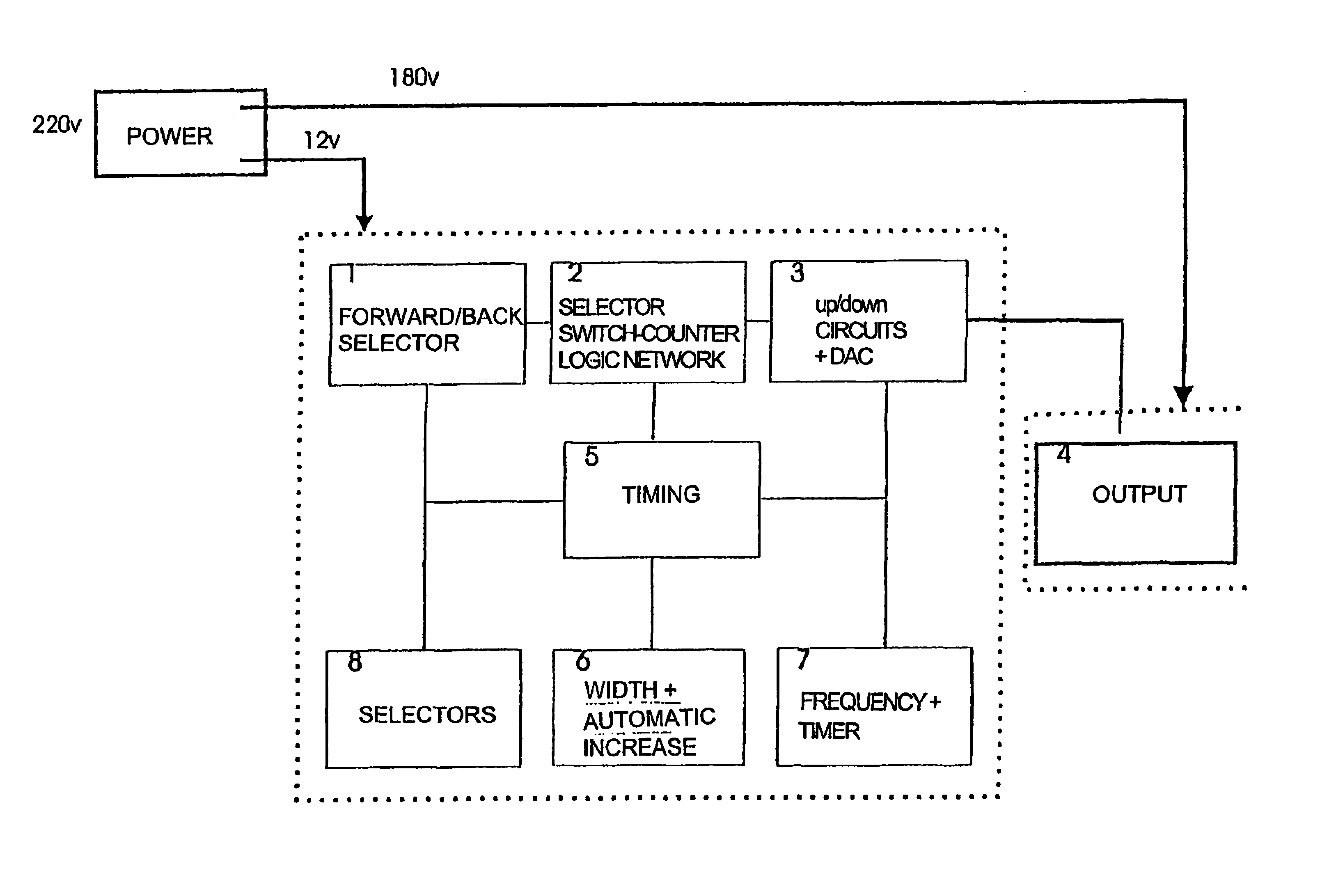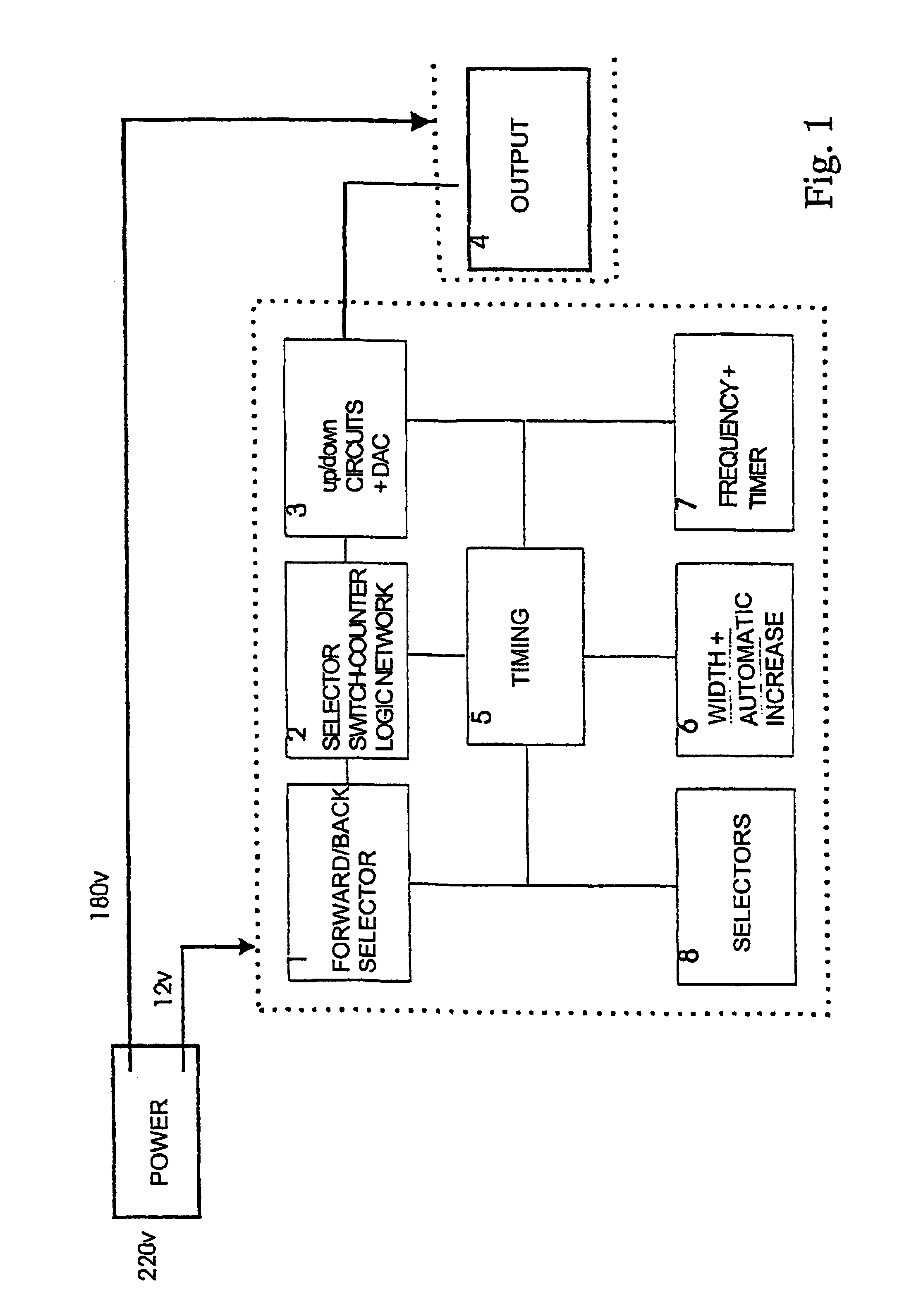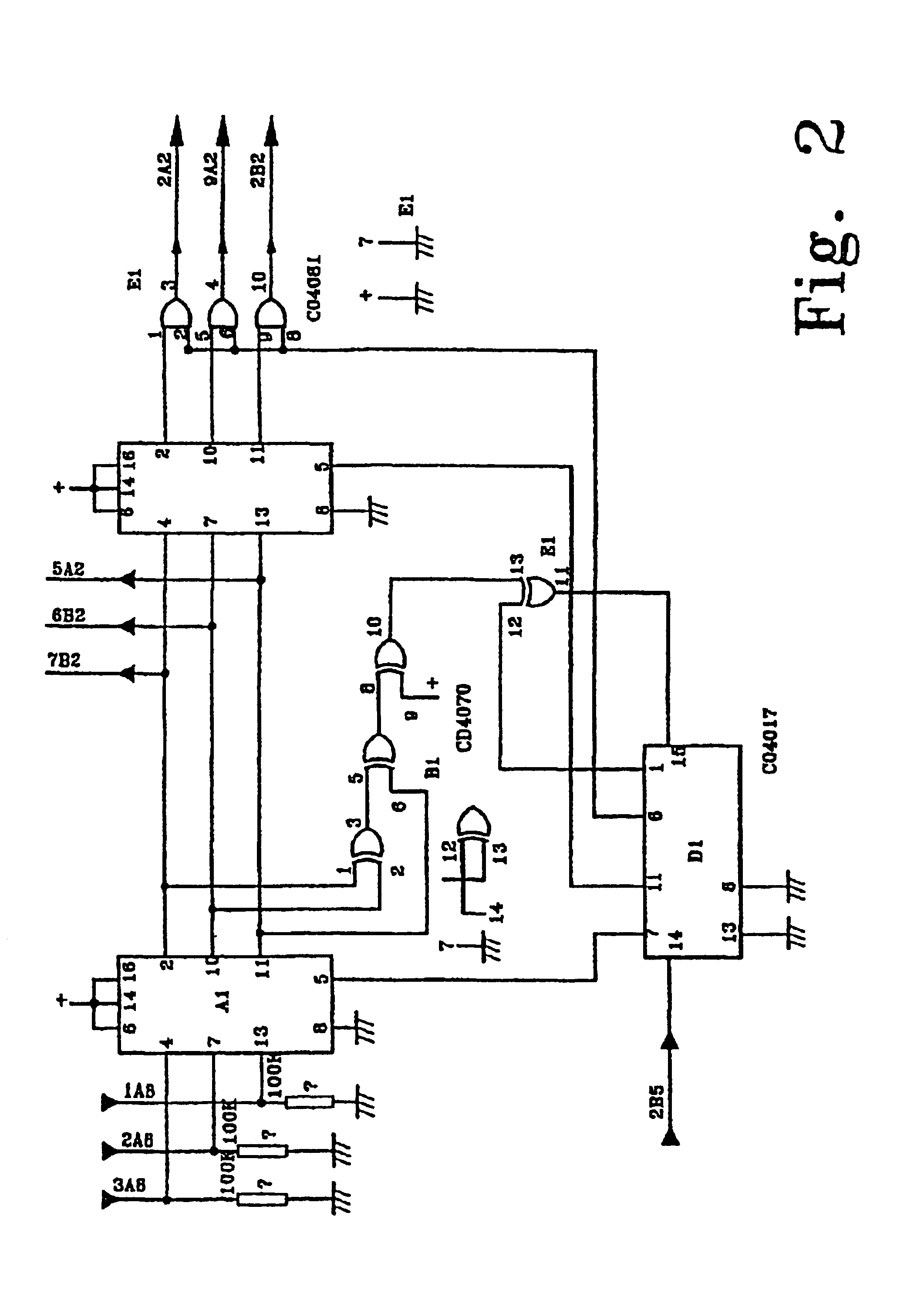Apparatus designed to modulate the neurovegetative system and integrate its action with that of the central nervous system; applications in the treatment of the vascular system and orthopaedic disorders
a technology the central nervous system, applied in the field of apparatus, can solve the problems of affecting the function of the vegetative system, affecting the function of the vascular system, and affecting the function of the vascular system, and achieve the effect of reducing inflammation
- Summary
- Abstract
- Description
- Claims
- Application Information
AI Technical Summary
Benefits of technology
Problems solved by technology
Method used
Image
Examples
example 1
Muscle Relaxation (Tables 1a-d and 2)
With the machine in accordance with the invention, one electrode was applied to the motor point and one to the belly of the trapezius muscle, and pulse trains were sent to the patient for 30 seconds at a voltage of approx. 180 volts, with a frequency of one pulse a second and a width of 10 microseconds.
During the second phase, lasting 5 seconds, the pulses were applied at the frequency of one a second, with a width of 20 microseconds.
As the test continued, the parameters were varied from time to time as indicated in the annexed tables 1a to 1d until the muscle reached spasm, then relaxed and remained in that condition.
As will be seen from the graph in Table 2, after approx. 12 phases of treatment the muscle reached an almost permanent state of relaxation.
This relaxation corresponds to the maximum degree of vascularisation and the maximum anti-inflammatory effect.
The anti-inflammatory treatment programme is shown in Table 3 and the associated Grap...
example 2
12 patients with distal arterial occlusion (7 with occlusion of the tibial artery and 5 with occlusion of the femoral artery) were studied before, during and after stimulation with the new technology.
The VEGF (pg / ml) was assayed at the times shown in FIG. 10.
As will be seen, an increase in VEGF was already evident 2-3 minutes after the start of the stimulus; it peaked after 5 mins (the increase was approx. 50%), and returned to normal after 15 mins.
Further tests confirmed that the best results can be obtained with series of pulses having a width from 10 to 40 μsec. and an intensity from 100 to 170 μAmp., with a peak having a width from 7 to 12 nanosec. and a voltage up to 220 Volts.
The waveform of a pulse of this kind, as displayed by an oscilloscope, is shown in FIGS. 10-12.
These data demonstrate for the first time that the application of the invention is able to increase VEGF, the most potent specific endogenous angiogenic factor identified to date. Increased VEGF production was a...
PUM
 Login to View More
Login to View More Abstract
Description
Claims
Application Information
 Login to View More
Login to View More - R&D
- Intellectual Property
- Life Sciences
- Materials
- Tech Scout
- Unparalleled Data Quality
- Higher Quality Content
- 60% Fewer Hallucinations
Browse by: Latest US Patents, China's latest patents, Technical Efficacy Thesaurus, Application Domain, Technology Topic, Popular Technical Reports.
© 2025 PatSnap. All rights reserved.Legal|Privacy policy|Modern Slavery Act Transparency Statement|Sitemap|About US| Contact US: help@patsnap.com



